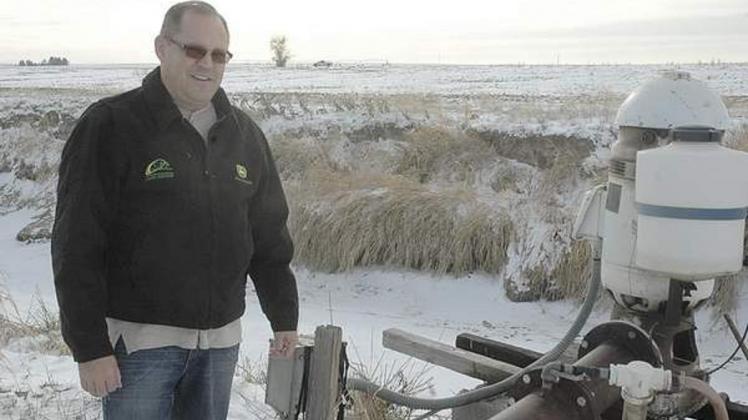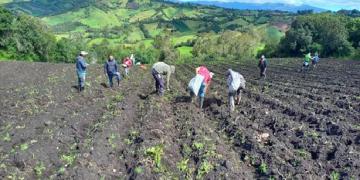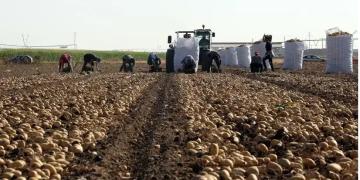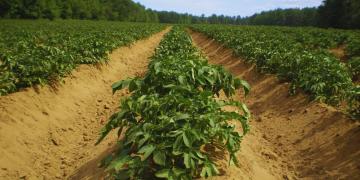EEUU: Idaho spud grower improves irrigation with magnetic fields
An Eastern Idaho potato farmer believes his crops require less water and fertilizer now that he’s running his irrigation water through a magnetic field.

SHELLEY, Idaho — Running irrigation water through a proprietary device that creates a magnetic field has enabled Eastern Idaho potato farmer Bryan Searle to cut back significantly on both water and fertilizer use.
The “magnation” technology requires no maintenance and fits into a pivot or pump, magnetizing water as it flows through, said Searle, who is also the new president of the Idaho Farm Bureau.
Often, irrigation water binds with minerals, forming larger clusters that can’t be absorbed by plant cells. Mike Jenzeh, president and CEO of California-based Magnation Water Technologies, explained his company’s magnetic fields provide a charge that “pulverizes” the clusters, separating minerals within water droplets and keeping minerals in suspension while creating more uniform water droplets.
The system also spins and mixes irrigation water and creates turbulence to further break apart the mineral bonds with water.
Jenzeh cites research finding the process improves nitrogen absorption by 30 percent, for example, and herbicide absorption by 50 percent.
According to a study by Olds College in Canada, Jenzeh said, magnetic fields have been found to improve water-use efficiency by 20 percent.
“Water loses that frequency when it’s sitting,” Jenzeh said. “Mineralization becomes a lot more of a problem.”
Jenzeh said testing has also demonstrated water exposed to a magnetic field increases soil permeability and retention, boosts yield and plant size, contributes to more uniform seed germination and even increases milk production in dairy cows.
Jenzeh, who has sold his systems to more than 3,000 agricultural customers, mostly in Nebraska and California, said a single unit sells for $6,100 to $8,400, depending on its size, and should last at least 10 to 15 years.
Searle learned about the technology through his representatives at Spudnik Equipment in Blackfoot. Searle first tested it on a single pivot of potatoes six years ago. He found the soil was moist when he tested the field, though an adjacent spud field with similar soil and the same irrigation regime was dry. That season was especially hot, but Searle managed to irrigate his test field about a week less than the adjacent field, on which pivots had to run constantly.
Petiole testing confirmed crops in the experimental field had absorbed far more nitrogen, phosphorus and potassium, he said. Searle estimates he cut back his nitrogen applications by 30 units.
Searle is now using the devices on most of the fields he owns, though he hasn’t made the investment on leased ground.
“We’ve seen results and we’ve acted on those results,” Searle said.
He hasn’t tested the technology with herbicide applications, and he’s noticed no yield bump in spuds. But Searle, who has both well and surface water, believes the technology could come in handy for groundwater users who will be expected to curtail water use by 11 percent, on average, next season under the terms of a new water agreement.
“I think it could definitely be a tool that could help,” Searle said. “We’ve got to look for options.”
Dan Vache, vice president of supply chain management with United Fresh Produce Association, was intrigued by a white paper highlighting benefits of the technology. He’s asked Magnation to display at his organization’s annual convention, scheduled for June 20-23 in Chicago.
“I think it’s very timely,” Vache said.
Fuente: http://www.capitalpress.com/Water/20151207/








